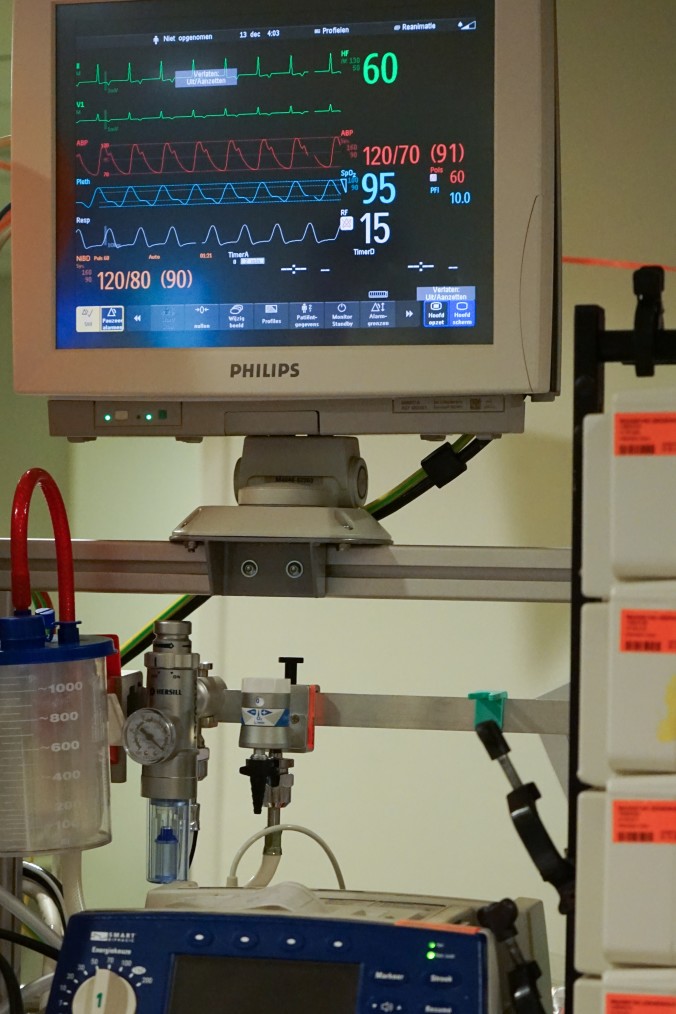What Is A Cardiac Pacemaker And Who Needs It?
The heart is one of the most crucial organs in the human body, and since you’re not blessed with two hearts, you need to be extra careful about the one beating inside your chest. Heart problems are the most frequently encountered complaints in a hospital, ranging from sudden heart failure, a cardiac shock to cardiac arrhythmias. A healthy heart is equipped with its own pacemaker that will cause your heart to beat without any dependency on external factors. However, increasing age, surgeries, trauma, or damage to the heart can affect the normal functioning, thus leading you to develop the need for a cardiac pacemaker. Here’s everything you need to know about a cardiac pacemaker and who needs it.
What Is a Pacemaker?
Pacemaker implants have become widely operational in people around the world to treat arrhythmias. An arrhythmia is an abnormal heart rate, which results in improper conduction of the impulses between the heart’s atria and the ventricles.
A pacemaker is a small device placed surgically beneath the skin of your chest or abdomen that releases electrical impulses to make your heart beat at a normal rate and rhythm. Surgically inserting an artificial cardiac pacemaker will help compensate for your heart to ensure proper working.
Parts of a Pacemaker
Modern pacemakers consist of two parts:
- Pulse Generator: it appears as a small metallic box having the battery and main operational circuit. It controls your heartbeat and regulates the rate of discharge of electrical impulses.
- Leads/ Electrodes: these are three in number and are flexible, electrically insulated wires. The lead wires are channeled through the veins to the heart. Their main function is delivering electrical impulses to the myocardium of the heart. These will cause the atria or the ventricles to contract rhythmically based on the impulse received.
Types of Pacemakers:
Depending on the damage to the conducting system of your heart, there are three types of pacemakers based on the number of electrodes used.
- Single Chamber Pacemakers: a single lead either in the right atrium or the right ventricle
- Dual-Chamber Pacemakers: two leads with one inserted in the right atrium and the other one inserted in the right ventricle
- Biventricular Pacemakers: three leads with one in the right atrium, one placed in the right ventricle, and the third attached to the left ventricle. A bivent is used in severe cases like chronic heart failure etc.
Pacemakers can either be temporary or permanent based on the effectiveness of the heart muscle. Doctors use temporary pacemakers to treat short-term problems such as medicine overdose or heart surgery, etc. Temporary pacemakers also come in handy during emergencies until a permanent one is inserted in the patient’s body. Long-term arrhythmias are treated using a permanent pacemaker.
How Does a Pacemaker Work?
Pacemakers help to control and monitor the heart rate and rhythm. They also keep a record of the heart’s normal electrical activity, which is continually being tracked by the computer in the pulse generator. Your doctor sets the programmer with a minimum heart rate value. In normal conditions, your heart will conduct impulses on its own. But if the heart undergoes a condition of stress and fails to conduct impulses naturally, then this will trigger the pulse generator in the pacemaker. Electrical impulses are discharged instantaneously, which travel through the leads and arrive at the atrium/ ventricle. Here, they cause the heart to contract with a normal rate, thus maintaining the efficiency of the human heart.
With an artificially generated electrical impulse of low-energy, pacemakers can be used to control:
- Tachycardia: a faster than normal heart rate
- Bradycardia: a slower than normal heart rate
- Atrial fibrillation: abnormal quivering of the right atrium
- Ventricular fibrillation: quivering of the heart due to improper conduction in the ventricles
- Heart Blocks: improper signal conduction between the SA node and the AV node or between the AV node and the AV bundle
- Coordinate transmittance of impulses between the heart chambers to ensure proper contraction
Who Needs a Pacemaker?
Pacemakers are usually implanted in people with abnormal heart rates, which may be either too slow or too fast as compared to the normal 72 beats/min. Arrhythmic patients require a permanent pacemaker implant for survival to ensure adequate blood circulation throughout the body. If there’s a failure of conduction of electrical impulses in the heart, the heart does not pump enough blood to be supplied to body organs, which may prove to be fatal in the long run. A few scenarios that demand pacemaker implant are given as:
- Athletes sometimes require a pacemaker to sustain their high heart rates even at resting conditions.
- People that are on medications such as beta-blockers (heart-slowing medicines) need a pacemaker to restore their heart rate.
- With aging, the heart muscle undergoes weakness, and the SA node stops working properly. This condition is known as sick sinus syndrome. The patient may experience pauses between heartbeats and requires a pacemaker
- If you are often experiencing extreme fatigue, dizziness, shortness of breath, and episodes of fainting, chances are you’re bradycardic and need a pacemaker.
- Tachycardia can also be treated with a modern pacemaker in case of extreme pounding and abnormal palpitations of the heart.
- People suffering from AV blocks, atrial or ventricular fibrillation, long QT syndrome, cardiac failure are in dire need of a pacemaker.
- After a surgery or injury to some other organ, the body may become dependent on a temporary pacemaker for some while.
- Abnormal palpitations and pounding on the chest
At South Florida CardioVascular Specialists, you are bound to be a valued and satisfied customer. Our clinic has shown reliable results and positive feedback in a wide number of pacemaker implants. We present expertise advice by experienced and talented doctors to guide you according to your needs. Individual counseling is also offered to people who are new to pacemaker life. We will be informing you of all details regarding the surgical procedure, risks, and lifestyle guidelines of living with a pacemaker. Moreover, we promise to provide our patients with automated and rate-responsive pacemakers to improve living standards. Having an advanced pacemaker technology combined with a team of leading and skilled experts in the field of cardiac arrhythmias, we guarantee every patient the perfect cardiac pacemaker implant.




